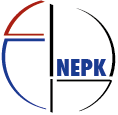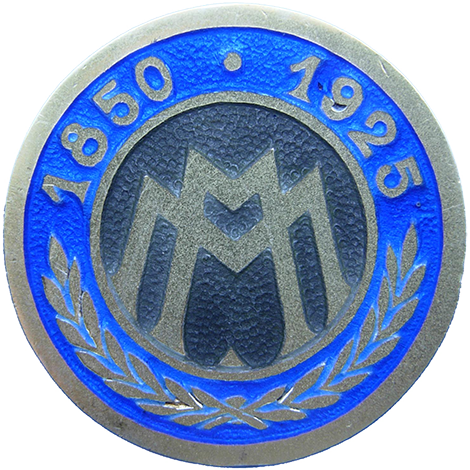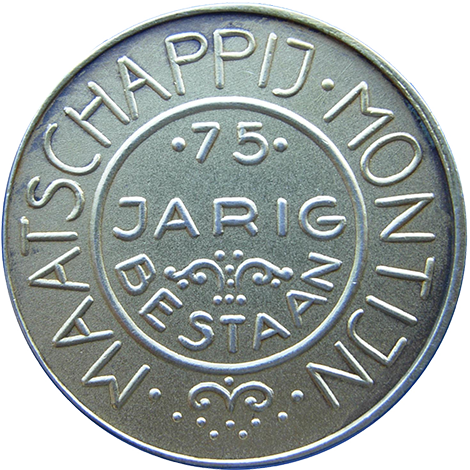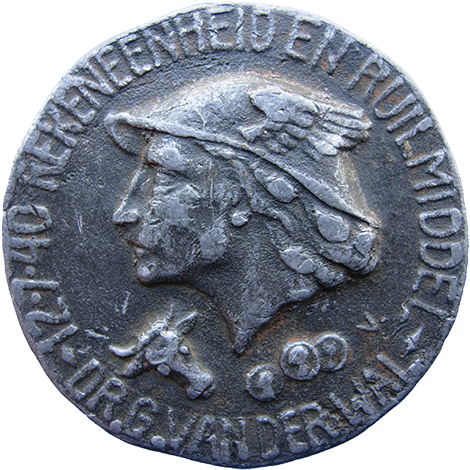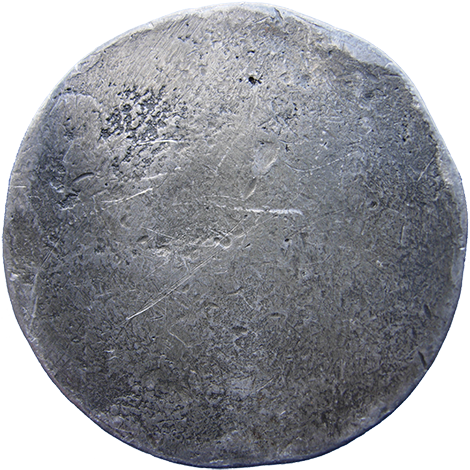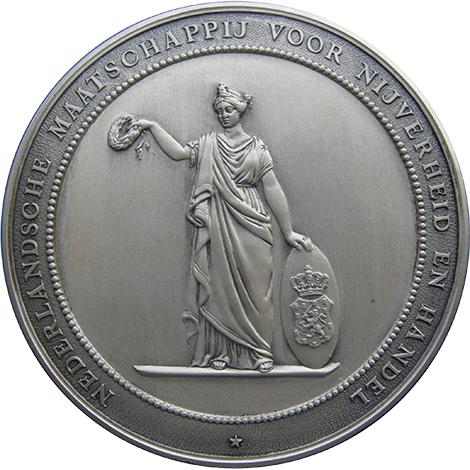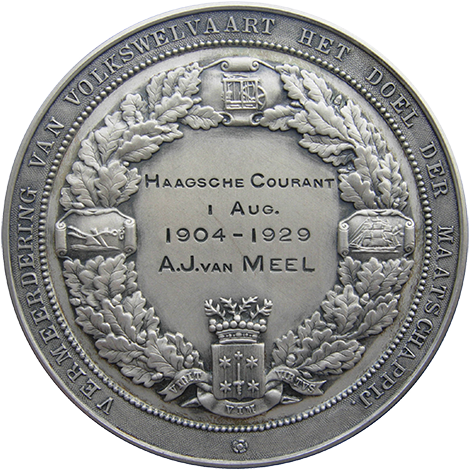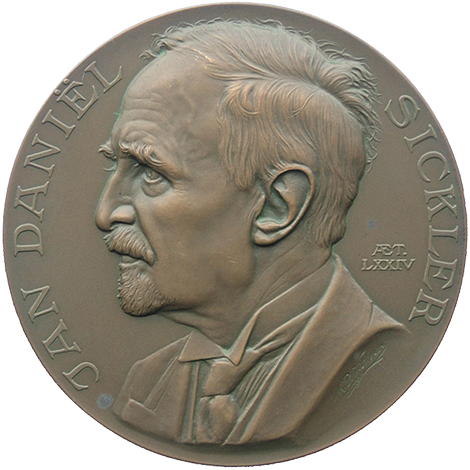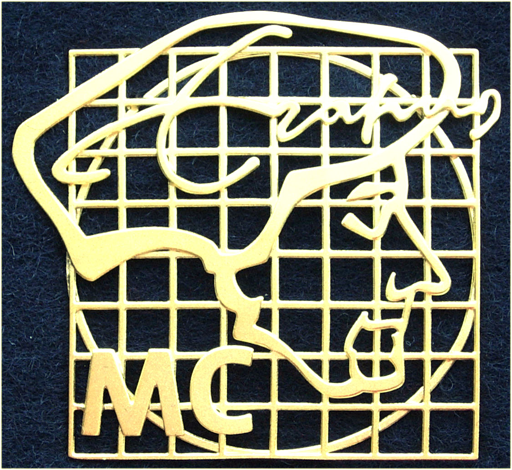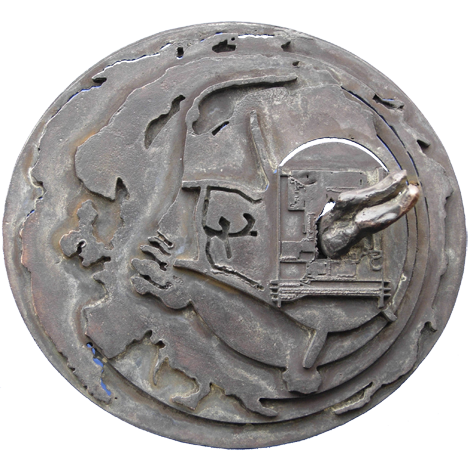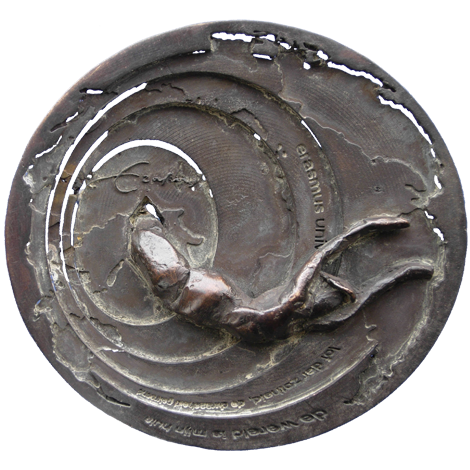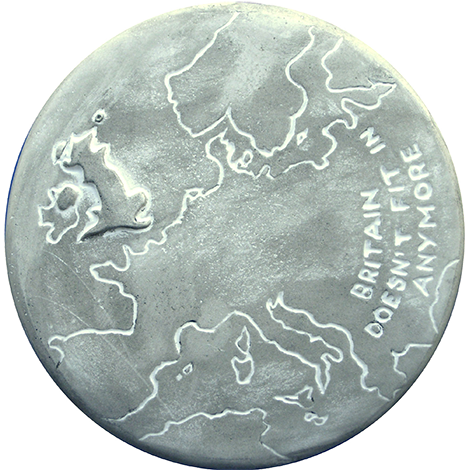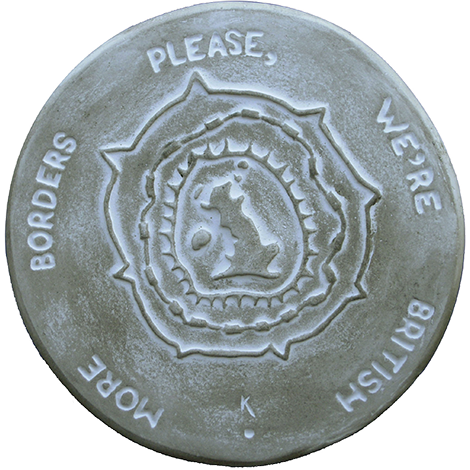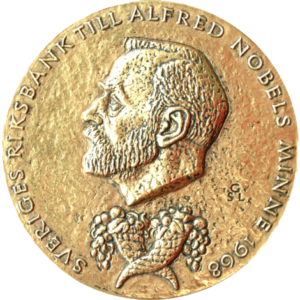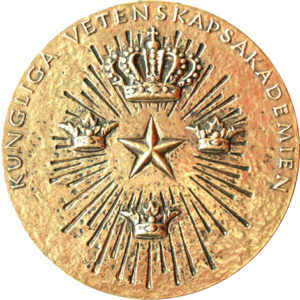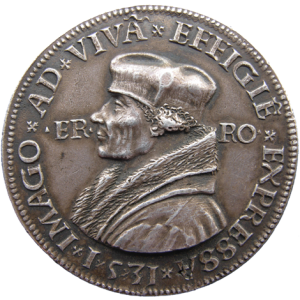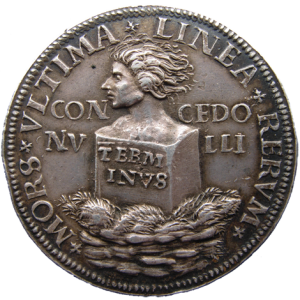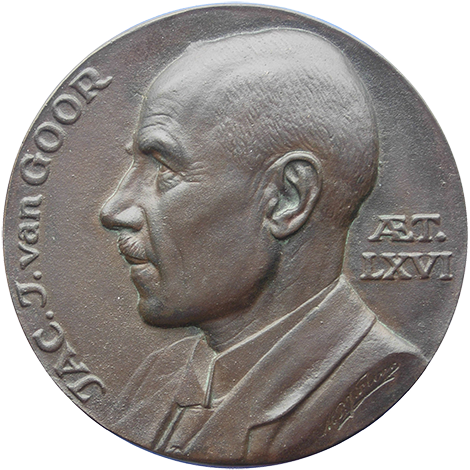
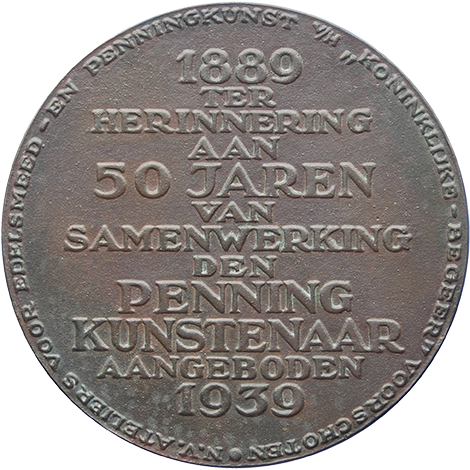
(Marinus Fleur, 1939, Jac. J. van Goor, bronze, cast, 90 mm, NEPK2500)
This medal marks the 2500th object in the NEPK medal collection. While over 95% of the objects can clearly be labelled as medals, the collection also features plaquettes and presses papier, often with a round medal type central part. Equally, several dozens of other medal related objects such as lapel badges or small insignia on a ribbon can be found. If you select the search term “Insignia” in the pull down menu “Type”, the search results immediately show their relation with medals.
Inventory number NEPK2500 is a cast portrait medal. It shows the sculptor and medallist Jacob(us) Jan van Goor (1874-1956). Little or nothing is known of Jacobs early years, apart from the fact that a physical defect made his movements difficult. At the age of 15 he started an apprenticeship at the silver and medal workshops of Begeer in Utrecht. His main activities concerned modelling, embossing and engraving, which he could largely execute in a sitting position. Its director Anthonie Begeer realised the young apprentice’s giftedness and allowed him further study at the company’s expense. Van Goor could thus stay several years at the Royal Art Academy in Hanau am Main, Germany, to further improve his modelling and silver work.
After completion of his studies Van Goor returned to Begeer, where for many decades he would continue to design and model several hundreds of medals. At the time this meant mostly medals that were struck using dies, sometimes in very large numbers. Only four of the 144 of the medals designed by Van Goor in the NEPK collection have been realised by the casting technique.
Van Goor was certainly all-round in all techniques graphic and he clearly was a gifted portraitist, as his many portrait medals in the collection show. His Abraham Kuyper medal is well known and so are his Dr. Karl Landsteiner medals and -plaquettes for the Red Cross Blood Transfusion Service, which have been awarded thousands of times. Van Goor’s portrait on the medal designed by his colleague Marinus Fleur is one of the very few portraits of this medal artist that we know of. After the period 1889-1939 that the medal commemorates Van Goor would work another ten years at Begeer, before retiring in 1949, aged 75.
For the medal shown, click: https://www.nepk.nl/en/collectie/?id=2500
For earlier news items, click: https://www.nepk.nl/en/news/
